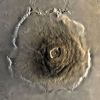Finding the Fun in Physics
Lesson Plans > Science > PhysicsFinding the Fun in Physics

Last week one of my Physics students said to me, "Mr. T, I just got an e-mail from J- [a graduate of our school who is now attending college] and he says his Physics class is boooorrringgg compared to what he did with you." I was flattered, and was also reminded of my own high school experience. Physics was one of the most fun classes I took, but in college it was tedious and boring.
Part of my philosophy of education (which I share with my students at the beginning of the school year) is that I will do everything I can (within reason) to make the material interesting and fun to learn, but their responsibility is to learn the material whether I succeed or not in making it fun.
Fortunately, Physics lends itself easily to "making it fun" so I don't understand why college Physics classes aren't fun.
Here are some ideas for finding the fun in Physics.
- Incorporate your students into classroom examples and problems
- Don't launch a cannonball in a problem, since you have students who would love to be the subject of a "human cannonball" problem.
- Find out what would happen (hypothetically) if a student jumped off the school building onto an 8 inch memory foam mattress.
- Send a student snowboarding down Olympus Mons (the largest known volcano in the solar system).
- If you're doing problems involving vehicles or collisions, put your students (hypothetically) behind the wheel of the car.
- When studying gravitational forces, hypothetically put two of your students in space a meter apart and see how long it takes until they collide.
- Let your students invent problems.
- Always listen for "What would happen if" and turn it into a problem.
- One day some of my students saw a wind farm, and wondered how far away someone would land if they were holding onto the tip of one of the blades, and let go just as the blade reached its zenith. We solved that problem in class.
- Incorporate fictional characters into problems.
- Roadrunner cartoons are a great source of Physics problems. Don't ask how long it would take a ball to reach the ground if dropped from a cliff - ask how long it would take Wile Coyote to reach the ground!
- Elmer Fudd is also another great source of slapstick Physics.
- Paul Bunyan and Babe the Blue Ox let you take human-sized problems and put them on a grander scale.
- The year the first Thor movie came out, a student wanted to do some problems involving Thor's hammer. So we pretended that the laws of Physics applied to the hammer and performed some calculations based on clips from the movie.
- Invent ridiculous scenarios
- Yesterday during Physics class, we imagined a scenario in which one of my students was landing her rocket on Planet Memory-Foam, when her thrusters failed and she went into free-fall a half a mile above the planet surface. Since the planet was made of memory foam, it was not a "hard" landing. The question was, assuming the student could survive 5 g's, would she survive her landing. The students loved this problem.
- Use interesting real world examples.
- Obviously, you can't be silly all the time - memory foam planets are fun to think about, but students should also be exposed to real world situations. But "real world" doesn't have to mean boring. My students particularly enjoy this lesson in which we examine the feeding habits of blue whales.
- Do physically active experiments
- If you have students who are track atheletes, make them race, and do velocity calculations.
- Make students run up stairs to do power calculations.
As my high school Physics teacher would say, "Physics is Phun!"
